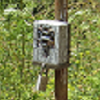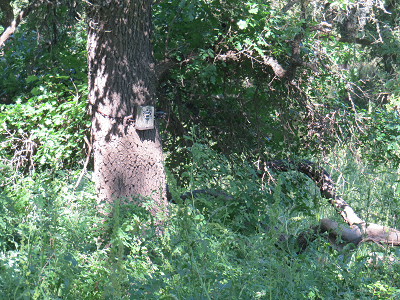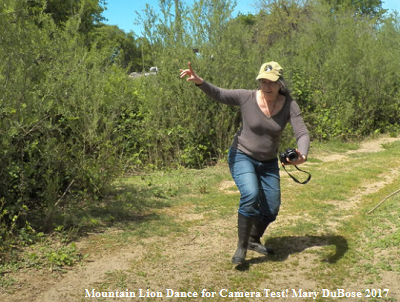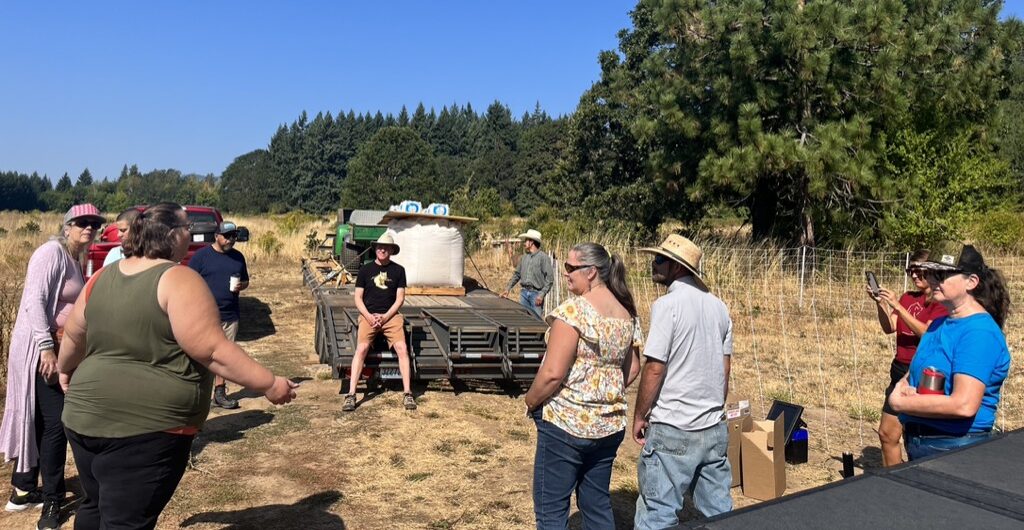 Trail Cameras – Location is Everything!
Trail Cameras – Location is Everything!
Our camera team gives careful consideration to where we place cameras in the field to best capture the most wildlife movement. Believe it or not, it’s a bit of an art to get the best coverage for the best results.When you’re working with an array of cameras, as the Cosumnes River Preserve lion camera team is, you have a few things to consider:
- The size of the area
- Access to the area
- Human impact to the area
- What wildlife is already known to be in the area
- Where wildlife may be most likely to walk, known as wildlife travel corridors. (This can include game trails, roads and levees.)
- What kind of wildlife you’re after
And nothing is written in stone. Cameras can always be moved depending on what kind of results you’re getting. It’s a fine balance when you’re working with a limited number of cameras as the rule of thumb when you’re doing this kind of camera trapping is consistency and patience. It will only take one lion walking by one of our cameras to be able to document an historical event – the first confirmed lion sighting on the Preserve captured on camera.
 Currently, the team has eleven cameras deployed on the Preserve. Ten of those belong to the Mountain Lion Foundation, on loan for this lion study through a generous grant from the Sacramento Zoo. We’re using Browning Strike Force Extreme Model BTC-7FHD-PX trail cameras. It’s a good camera and gives us the results we want most of the time. We get good day shots and night shots are usually good although they can be blurry depending on how fast the animal is moving.
Currently, the team has eleven cameras deployed on the Preserve. Ten of those belong to the Mountain Lion Foundation, on loan for this lion study through a generous grant from the Sacramento Zoo. We’re using Browning Strike Force Extreme Model BTC-7FHD-PX trail cameras. It’s a good camera and gives us the results we want most of the time. We get good day shots and night shots are usually good although they can be blurry depending on how fast the animal is moving.
Adjustments can be made as to the photo quality – higher pixels means bigger photos. We usually use a standard 4 GB SD card for our camera checks. The bigger the photos, the larger the SD cards we’d need, and if the camera is in a high movement wildlife area, we’d need to check the camera more frequently, several times a week, so that the SD card doesn’t fill up, causing you to miss that mountain lion!
Other things we consider carefully are camera direction, height and angle. Once you’ve got an area that you know is a wildlife travel area, you have to pick an object to mount the camera on. On the Preserve, it’s usually an oak tree though several of our cameras are mounted on posts that have been installed by the Preserve. We always look for a north-facing mount, as that usually gives the best exposure throughout the day, with the sun never directly shining on the camera. Direct sun on a camera causes images to wash out, meaning you’re missing important wildlife movement. Next pick for direction would be a northwest mount, so that the camera is still not getting direct sun, and won’t get direct light from the west either, hopefully.
In our experience, an east-facing mount is totally washed out during sunrise and other times during the morning when there’s direct sun. The same goes for a direct west-facing mount during sunset hours. A south-facing mount can get sun all day long as well and can mean that you miss a lot of good shots. In some of the deeply wooded old oak forests, you can play around with the direction, as long as you test it and know your camera won’t get direct sun during the day.
We mount the cameras at least 5 feet high and this is because the Preserve floods. There are many thoughts as to camera height, some folks mount at 30 inches or so, which is a great height to get more eye-level shots of deer and mountain lions. But the Preserve floods almost every year. The higher we mount the cameras, the less chance they’ll be flooded out in the winter months. We’ve had several camera locations at about 4 feet high that went completely underwater during past winters! Using a shim can give you the best angle on a higher mount, casting the camera view a bit downward to better capture the passing wildlife.
 The most important thing of all! Once you’ve picked a location, mounted a camera and got the batteries and SD card in, test, test, test! We let the camera arm and then one of our crew volunteers goes out in front of the camera to ‘walk like a mountain lion’ to make sure where camera locations will pick up a wildlife movement effectively. If the angle is a bit off, we adjust. And we format the SD cards in the field and test each one, each time on each camera to minimize the possibility of field malfunctions between camera checks.
The most important thing of all! Once you’ve picked a location, mounted a camera and got the batteries and SD card in, test, test, test! We let the camera arm and then one of our crew volunteers goes out in front of the camera to ‘walk like a mountain lion’ to make sure where camera locations will pick up a wildlife movement effectively. If the angle is a bit off, we adjust. And we format the SD cards in the field and test each one, each time on each camera to minimize the possibility of field malfunctions between camera checks.
With solid support from the Cosumnes River Preserve staff, our lion crew works hard in the field every week to make sure our cameras are operating at best capacity and are located in the most effective locations. Because it’s not about perfection, it’s about making sure we’re giving the study the best chance to find a lion.
—
The Bureau of Land Management initiated a mountain lion study on the Cosumnes River Preserve in collaboration with the California Department Fish and Wildlife in 2014. Currently, the study is being carried out by an all-volunteer crew of dedicated individuals who receive support and oversight from the Bureau of Land Management. The Sacramento Zoo has awarded a grant to the Mountain Lion Foundation which has allowed the Foundation to purchase and loan ten trail cameras to the Preserve to help carry out this study. The goal is to find and document a mountain lion on the Cosumnes River Preserve.



 Facebook
Facebook Twitter
Twitter Send Email
Send Email


